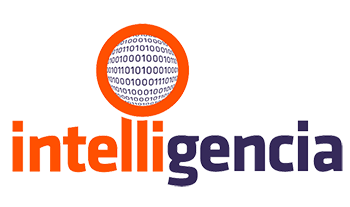
Working hypotheses within an investigative mindset
March 20, 2023
Intelligencia Training nominate Molly Wilson for national fraud award
August 25, 2023As analysts, the term ‘bias’ is something that comes up very often within the Intelligence community and overcoming bias can be a difficult thing to do. Whilst we are all aware that we should be mindful of allowing bias to creep into our analysis, it can sometimes be easier said than done.
The most common types of bias that analysts may be accustomed to can include: Tunnel vision, Authority bias, confirmation bias and clustering illusion.
A recent article published by the BBC around the Weapons of Mass destruction in Iraq back in the 2000’s, highlights how confirmation bias resulted in Intelligence failure. They quote: “confirmation bias led government experts to listen to fragments of information which supported the idea that Saddam Hussein had WMDs, and discount any that did not.” Despite this happening back in the 2000s, this particular article was published this year (2023), demonstrating the long-lasting impact that bias can have on decision making. The factors highlighted within this case make this example still relevant to this day as it not only shows how bias can lead to intelligence failure but also more importantly highlights that even the most experienced of us are prone to bias.
How does bias present itself within analysis?
There are several different ways that bias can be introduced into our analysis. This could be through the way a particular Intelligence requirement or question is put to us, it could also be via the data we receive and how this is presented to us, commonly known as the ‘framing effect’. When producing intelligence products, we want to ensure we produce meaningful and actionable outputs that decision makers can act on, however, in order to achieve this it can be easy for analysts to seek patterns and trends within data sets which may not actually be present.
When it comes to decision making, it is easy to use mental shortcuts and make decisions using subconscious processing based on previous experiences and knowledge, this is where we often see assumptions being introduced within an analytical process.
Assumptions are often used to temporarily fill intelligence gaps within our work but should only be if they are informed, based on previous knowledge or subject matter expertise, relevant to the requirement and supported. It is often the case however that assumptions which are used are not always correct or checked for their accuracy.
As analysts, assumptions are unavoidable, and we should always look to expose our assumptions where possible. Why? If exposed appropriately, they should help to strengthen an analytical product through the collection of information where there may be a gap in information. They also help to build confidence with customers through transparent rationales, with colleagues through peer reviews to ensure any assumptions made are valid and finally with the analysts themselves as it should provide confidence that all aspects have been covered.
So how do we overcome the issue of bias and using incorrect assumptions in our analysis? Firstly, when it comes to making decisions, a structured analytical approach should be taken to mitigate bias. As analysts we have a variety of methods which can be used to reduce and eliminate bias. This can include structured analytical techniques including, but not restricted to, Pattern analysis, Analysis of Competing Hypotheses (ACH), SWOT Analysis, environmental scanning techniques and Key Assumptions Checks (KAC). By using a structured analytical approach, not only does this provide accountability and credibility for the analyst creating the products, but also ensures decision making is based on robust analysis.
The recommendations we make in our work can be mitigated by understanding and highlighting the strengths and weaknesses of a particular recommendation, these then helps to overcome confirmation bias, the anchoring effect, or authority bias and allows a transparent approach for decision makers.
As analysts, we should always aim to employ critical thinking into our work. Critical thinking is a key part within analysis, and in its simplest terms is ‘thinking about thinking’. By identifying bias and seeking to remove these, analysts can ensure that their analytical outputs are informed, objective and meaningful to the customer. A number of questions can be considered to encourage critical thinking: what is the question that is being asked? What is the purpose of the product? What point of view should the analysis be conducted by? Do you have all the information you require? What assumptions could you use within your assessments and how are these supported? Is any part of the analysis prone to bias? By doing this analysts can fully understand the requirement, and allowing them to generate further critical thinking by considering the ‘so what’ and ‘what if’ to the analysis.
On the L4 Intelligence Analyst Apprenticeship we develop analysts through the use of essential skills and behaviours to understand the types of different bias’s they can encounter and the ways in which these can be mitigated. We open analysts up to new tools and techniques they can incorporate into their work. Most importantly, we apply critical thinking to all areas covered in the apprenticeship to equip analysts with the correct skill set needed to ensure the products they produce are credible, accurate and objective. Training analysts in recognising and countering bias is key to any organisation and having an analytical team of critical thinkers is a valuable, and powerful tool in supporting decision making.
As a provider that teaches across a wide variety of sectors, we ensure that a standardised approach is taken, and this allows analysts on our programme to not only consider how analytical assumption and bias may impact their organisation but also consider factors which may be relevant to external agencies and other partnering sectors.

